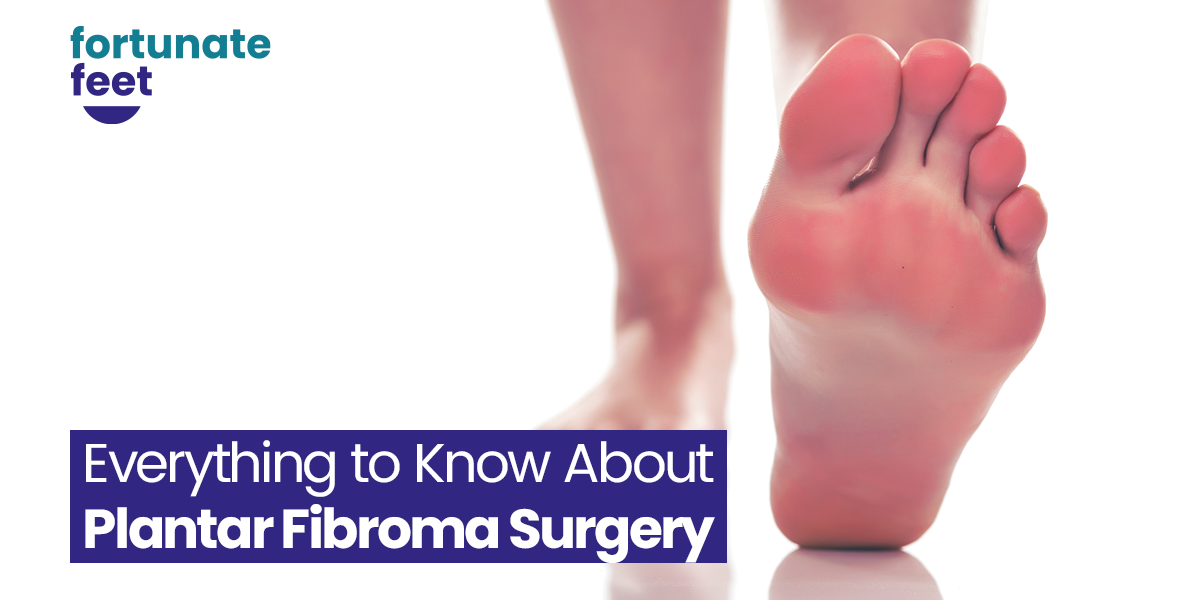The journey of dealing with plantar fibromas can be quite complex, invoking various emotional and physical challenges. For those who find themselves confronting this condition, the path often includes a decision about surgery. Many patients are left wondering: “What transformations can I expect before and after this surgical intervention?” This question poses not only a practical inquiry but also opens up a gateway to understanding the nuances of recovery and the broader implications of such a procedure.
Plantar fibromas are benign tumors that develop in the plantar fascia, which is the tissue connecting the heel to the toes. Though they are non-cancerous, these growths can cause significant discomfort and hinder mobility. Symptoms often manifest as pain or a feeling of heaviness in the arch of the foot, which can severely impact day-to-day activities. Thus arises the dilemma: endure the discomfort or seek surgical options to alleviate it?
Before surgery, patients typically undergo a thorough assessment which may include imaging techniques like MRI or ultrasound to confirm the presence of a fibroma. This pre-operative phase is crucial, revealing not just the fibroma’s size and location but also helping patients understand their treatment options. It’s during this period that the emotional burden can surface. Fear of the unknown, anxiety about the procedure, and worries about recovery dominate the minds of many. It is essential for patients to have open dialogues with their healthcare providers to express their concerns and gather insights into what lies ahead.
Upon deciding to proceed with surgery, patients are often advised about the typical techniques used in such procedures. Standard surgical intervention usually involves excising the fibroma, which may range from a minor outpatient procedure to more extensive surgery, depending on the fibroma’s dimensions. This phase highlights a common challenge: balancing the potential for pain relief against the risks associated with surgery, such as infection or nerve damage. Patients must weigh these factors seriously.
As patients enter the post-operative phase, they encounter a multitude of transformations, both physical and psychological. Initially, one might experience pain similar to what they felt prior to surgery, leading to frustration. It’s crucial to remember that healing is a continuum; immediate relief may not be instantaneous. Depending on individual circumstances, recovery time can vary significantly. For many, the first few weeks post-surgery may be fraught with discomfort as the foot heals, offering a stark reminder of why they sought this option in the first place.
With proper healing, patients begin to notice gradual improvements. The subsiding of swelling and pain heralds the onset of a new relationship with their feet. Simple movements that were once a source of distress can slowly transform into expressions of freedom. It’s common for individuals to feel a revived sense of agency and empowerment, as the burden of the fibroma diminishes. Regular follow-ups with healthcare providers ensure that the recovery is on track and that any complications are promptly addressed.
Emotional transformations also play a pivotal role in the journey of recovery. Many individuals find themselves reassessing their lifestyles and reflecting on the importance of self-care. This newfound awareness can lead to lifestyle changes that promote foot health, such as selecting appropriate footwear, engaging in regular physical activity to strengthen foot muscles, and, importantly, listening to one’s body. The surgical transformation, therefore, extends beyond the physical—it can catalyze profound life changes, underscoring a commitment to health and well-being.
However, it is critical to acknowledge the realities that some patients might face post-surgery. There exists the possibility of recurrence, where a new fibroma may develop. This potential challenge can elicit feelings of disappointment and anxiety. Thus, many find solace in support groups or counseling, where they share experiences and strategies for coping with pain and uncertainty. Empathy and communal support can significantly bolster morale, paving the way for a more resilient outlook toward future health interventions.
In summary, the plantar fibroma journey is a multifaceted experience, encompassing a wide spectrum of physical discomfort, emotional upheaval, and transformative healing processes. Patients navigating this path must arm themselves with knowledge and support. The question remains: are you ready to embark on your own journey toward recovery, keeping both the physical and emotional landscapes in mind? The transformations are not merely surgical; they encompass a holistic rebirth where challenges are met with resilience and determination.
Ultimately, awareness and preparation are the cornerstones for a successful outcome. By understanding what to expect before, during, and after surgery, patients can cultivate a fortified mindset adept at navigating the trials of recovery. It’s a journey that, while often paved with obstacles, can lead to profound personal growth and renewed zest for life. Every step towards healing is a step toward reclaiming strength, mobility, and confidence.
